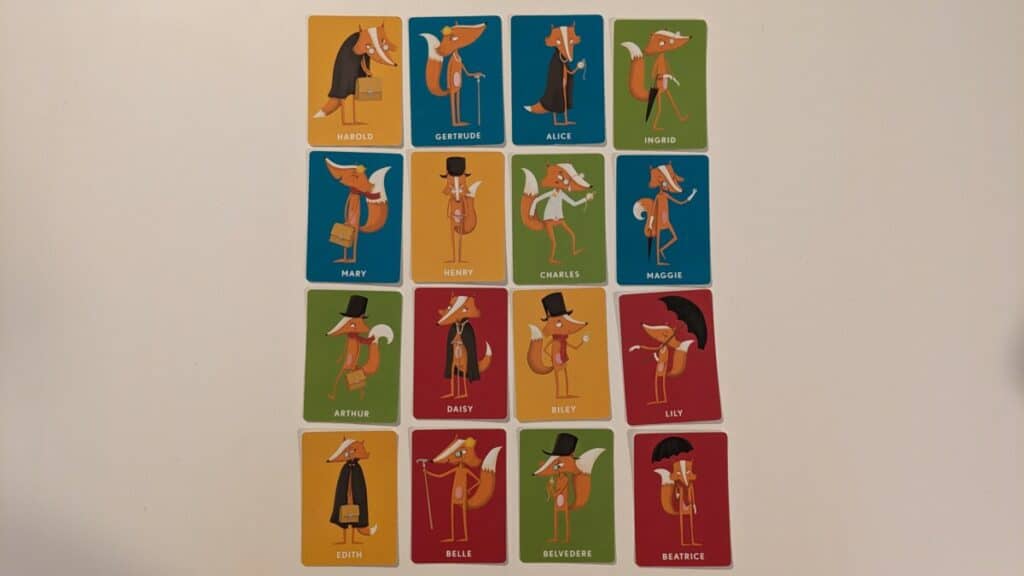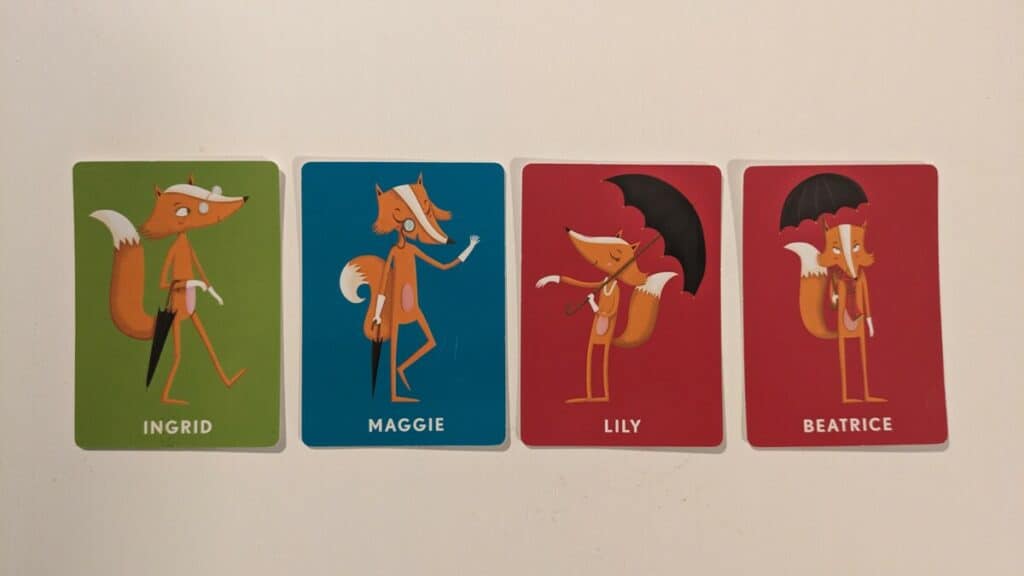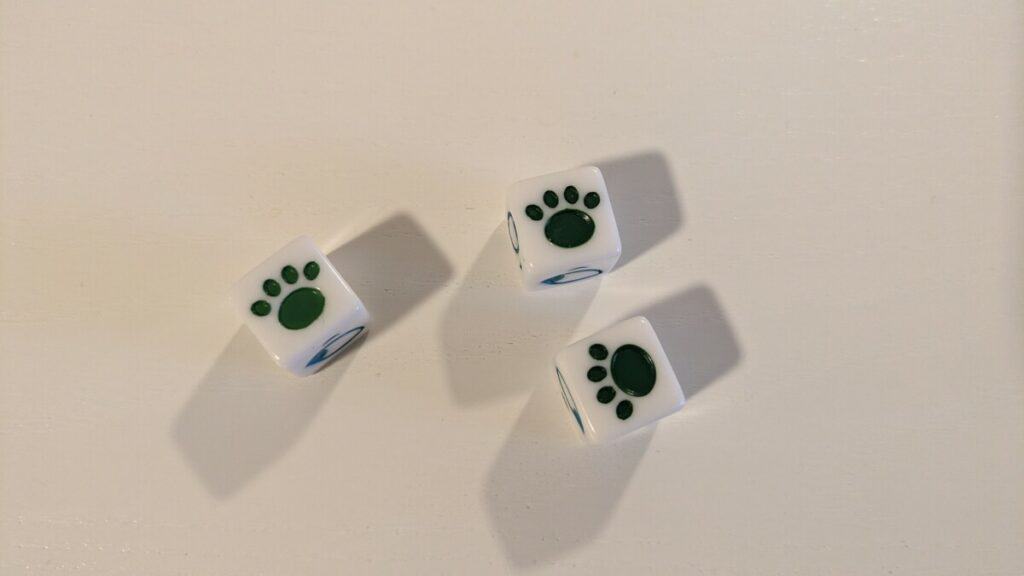
Outfoxed from Gamewright is a unique cooperative game that combines logic, strategy, and luck. We started playing this game a few years ago as a way to introduce more complicated games to my daughter and we’ve been having fun with it as a family ever since. Over many play-throughs, we have picked up several strategies that help us win almost every time. These Outfoxed strategies are sure to improve your game and help you to win more often.
In general, the best Outfoxed strategies are to use the distribution of clues to infer more information about the thief, plan out your team’s paths, and prioritize the unveiling of clues. More advanced strategies include remembering which clues are mutually exclusive and maximizing your mobility.
I was surprised to learn how much strategy can be used in a relatively simple family game. Some of these tips and strategies aren’t completely intuitive, so I’ll go into more detail about how and why to apply them. By implementing these Outfoxed strategies you’ll be able to win the game even on the hardest difficulty almost every time.
Understand the distribution of clues

The design of Outfoxed is fairly simple, and we can use this to our advantage when trying to deduce who the thief is. When trying to solve the case, always remember that:
- Each suspect has 3 clues that apply to them
- Each clue type applies to 4 unique suspects
- Every suspect has a unique combination of clues
This means that you can make some powerful inferences based on the information you’ve already gathered!
For example, if you have uncovered three clues that apply to the thief (green dots) then you know that you don’t need to hunt for any more clues. You can focus on revealing suspects until you’ve found a perfect match.
Know which clues are mutually exclusive
It’s extremely helpful to know that some clues are mutually exclusive, meaning that if a suspect has one of the clues, they definitely don’t have the other.
The best example of this is the ‘glasses’ and ‘monocle’ clues. No suspect is wearing both a monocle and glasses. Therefore, if you reveal that the thief is wearing a monocle, then you know for a fact that they aren’t wearing glasses, and vice versa. Another example is the scarf and cape combination – no suspect is wearing both. There are many of these combinations, these two are the easiest to remember.
Look at what the suspects are carrying

Each suspect in Outfoxed is carrying exactly 1 item in their hands. By positively identifying one of these items (with a green dot) you can eliminate 12 out of the 16 suspects! These items are:
- Bag
- Cane
- Watch
- Umbrella
If you find one of these clues and reveal that the thief is holding a specific one then you can infer that they aren’t carrying the other three. This is a powerful piece of information because you can immediately cut the list of potential suspects down by 75%.
Exploit the ‘Umbrella’ and ‘Gloves’ clues

When looking for strategies in Outfoxed I noticed this peculiar coincidence that can be used to your advantage. Every suspect that is wearing gloves is also holding an umbrella, and vice versa. Therefore, if you reveal that the thief has either gloves or an umbrella you also know that they have the other.
When you combine this information with the knowledge that each suspect has exactly 3 clues that apply to them, you know that you’ve discovered two-thirds of the clues about the thief with one discovery!
Prioritize revealing clues over suspects
In general, it is much more powerful to discover clues than it is to reveal suspects in Outfoxed. You should aim to have at least one suspect revealed to whom all of your current clues apply, but after that you should try to focus on revealing clues.
CHECK IT OUT: Do you like playing Outfoxed but you don’t like the huge box it comes in? Check out this handy hard shell travel case on Amazon that securely packs the game away in less space.
If you spend a lot of turns revealing suspects then you are potentially wasting time and risking the fox escaping. It’s always possible that the suspects you currently have revealed are the thief, so as long as they haven’t already been eliminated you should focus on revealing more clues about them.
Assign a section of the board to each player
When each player is moving around the board it’s best to have a route planned out. Since it’s a cooperative game, you can discuss this beforehand so that everyone knows which direction they should go. You can divide things up evenly according to how many players you have.
It’s worth noting that the clue squares are not evenly spaced over the board. Each quadrant of the board has 3 clue squares (for a total of 12). The direction each player takes should be guided by how many ‘paws’ they roll on the first turn in which they are hunting for clues.
If a player rolls only 3 paws then they should go to the bottom right, where they can immediately reach a clue square. If they roll 4 paws then they should go to the bottom left or top left, leaving the bottom right for another player in case they roll only 3 paws. If they are lucky enough to roll 5 paws then they should start to the top right, since that is the most difficult quadrant in which to reach the first clue square.
Use your mobility when you have it
In that same vein, you should prioritize reaching more distant clue squares in your section of the board when possible. If you roll 5 paws and you have the choice between two clue squares that are 4 and 5 squares away, you should move to the one that is 5 squares away.
This makes the most use of your mobility and makes it easier to reach the remaining clue squares if you don’t roll as many paws on a subsequent turn.
Don’t get greedy with additional dice rolls

When you declare that you want to search for clues you get 3 dice rolls to turn up all ‘paws’. Each die has three sides with ‘eyes’, two sides with ‘one paw’, and one side with ‘two paws’.
If, on your first roll, you are showing three ‘one paw’ dice it can sometimes be tempting to roll again to try to get ‘two paws’ to show, letting you move further in one turn. This is a mistake because you’re risking rolling an eye and allowing the Thief to sneak further towards his or her goal.
If you’re hunting for clues and you ever get all ‘paws’ showing, you should just take the result and move – don’t try to roll again. There is no downside to this since you can take as many turns as needed to solve the mystery.
Sort the clues as they are revealed
While you reveal clues throughout the game you should take some measures to sort them or remember which ones applied to the thief and which didn’t. When I play with my family we like to remove ‘negative’ clues from the board and only leave the clues that apply to the thief on their clue square.
You can just choose to remember the result of each clue card as the game rules suggest, or you can devise your own system to sort them.
Don’t unnecessarily guess the thief
You should take as many turns as you need to unveil the Thief in Outfoxed. There is no real benefit in guessing who the thief is when you have incomplete information, so you should take as much time as you need to gather as much information as possible.
The only exception to this is if the Thief is very close to escaping, which would cause you to lose the game. In this case, it might be worth making an informed guess as to who the thief is since you’ll still probably have a very good chance of correctly identifying them.
Thanks for reading! If I missed something or you have your own opinions, please drop a comment below.
What is thr benefit of along out first in hand? Seems to me like you would never want to assume…
Your strategy comments are excellent, well thought out and very helpful! Thank you
You would only get to draw and play a Sanctuary card on turn two of round one if the Region…
Rule question. If in phase one of round one I play a Region card with a Clue symbol at the…

Leave a Reply